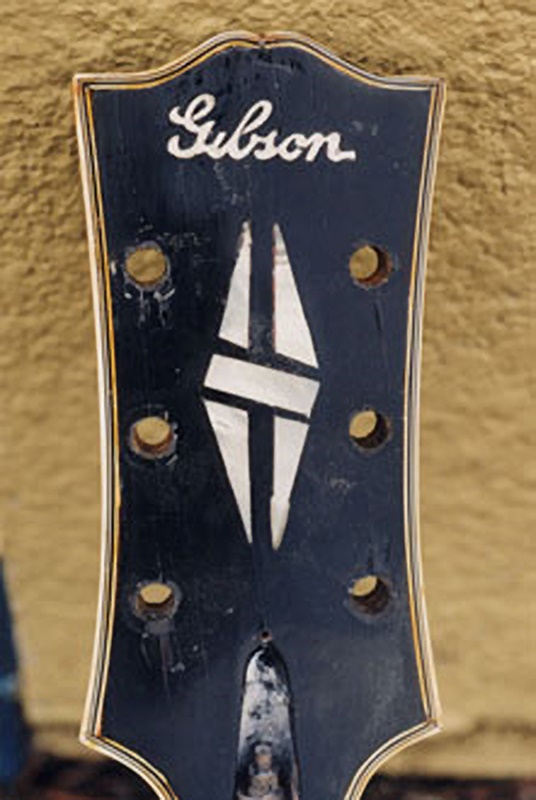Acoustic Guitar | Gibson Super 400, 1934
This is a 1934 Gibson Super 400. It was restored about 40 years ago, but, oh, what a horrible job was done! It is unbelievable to know this was done in a repair shop. There was no respect, no caring, no consideration towards the musical instrument and music lovers. I can’t imagine how many musicians have been ripped off this way.
The workmanship of this old Gibson is superb, and the contour of the top and back is beautiful. When refinishing, special attention is required to not ruin its beautiful contour, but on this guitar, there were so many bumps and dips, which you can see in this photo.
After stripping off the finish, all of the contoured wood had to be sanded. Although high spots can be sanded down to the right level, in order to make any low spots level, everywhere except the low spots must be sanded down to make a perfectly level line. The low spots can be built up with clear resin, but this is very tricky.
It is very time-consuming drudgery to reform a distorted contour by sanding, using shadows under a good source of light as your guide.
The best tool for this kind of work is “patience”.
There are so many processes involved in finishing work: sanding the foundation before coating, filling pores, coloring, under-coating, top-coating, wet-sanding, polishing, etc. All these tasks must be done properly at each stage. Otherwise, unexpected problems can appear later.
When the finish starts chipping off like this, it’s almost impossible to stop it. The solution is complete refinishing.
It’s always a challenge to fix the worn and damaged edges of a headstock. The top end of the headstock is usually rounded, especially on an old, abused guitar. Some previously repaired headstock faceplates are not flat because of a poor sanding technique. If that is the case, the whole headstock has to be made smaller in every direction.
But this technique can’t be used if the headstock has a binding or serial number punched on the back, because the width of the binding will be changed and the serial number may be deformed.
So, sometimes, a badly worn or damaged binding has to be changed, and dents on the binding can be filled with colored epoxy.
A new binding was installed at the end of the headstock, since it was beyond repair with just a new finish.


Here is further evidence of a very poor previous repair. The broken part of the heel was glued off centre and the whole heel is deformed.
 You can see three dark parts, one in the dovetail and two in the heel on each side of the dovetail. This is the ebony for reinforcement after the heel was glued.
You can see three dark parts, one in the dovetail and two in the heel on each side of the dovetail. This is the ebony for reinforcement after the heel was glued.
It’s not a bad idea to reinforce a glue joint, but it won’t work if the splice isn’t installed properly or the wrong glue is used. If the joint fits perfectly together, then regular wood glue is sufficient.
The person capable enough to get this far with a repair should be able to fix it properly, if things are thought through clearly, that is.
 A completely new heel was glued, because it didn’t make sense to use the original deformed part.
A completely new heel was glued, because it didn’t make sense to use the original deformed part.
 A triangle shell inlay was installed on each side of the base of the new bridge.
A triangle shell inlay was installed on each side of the base of the new bridge.
 A well-made guitar full of a good craftsman’s energy always responds to repairs made with caring and respect. This guitar is old but still very much alive!
A well-made guitar full of a good craftsman’s energy always responds to repairs made with caring and respect. This guitar is old but still very much alive!















